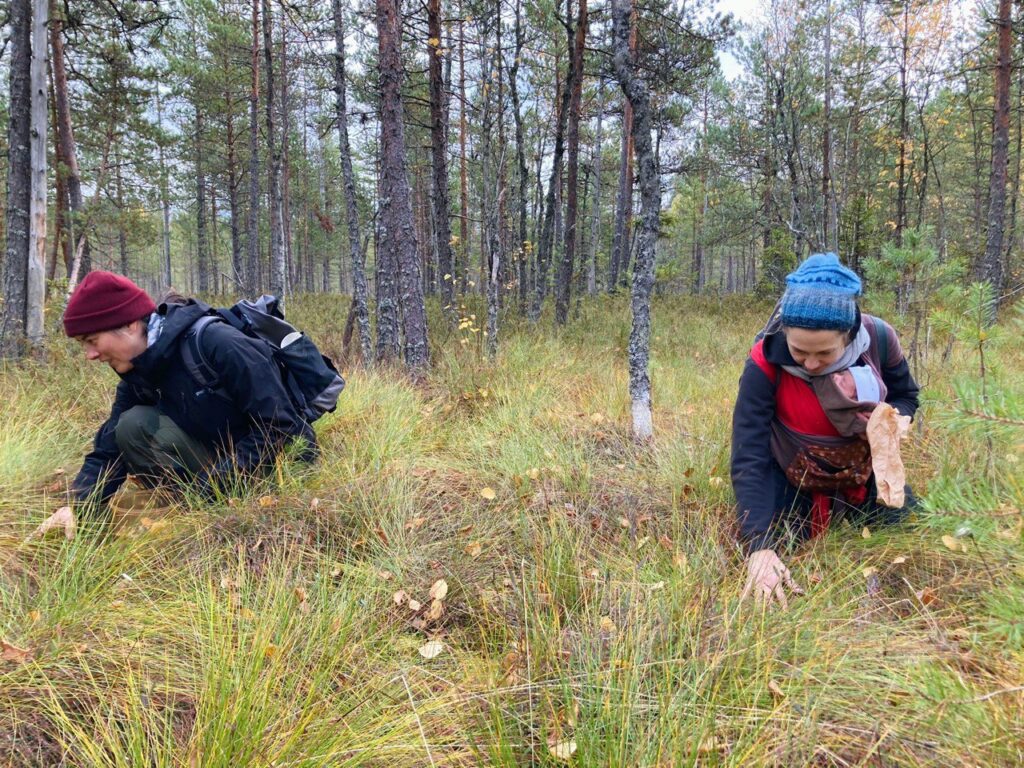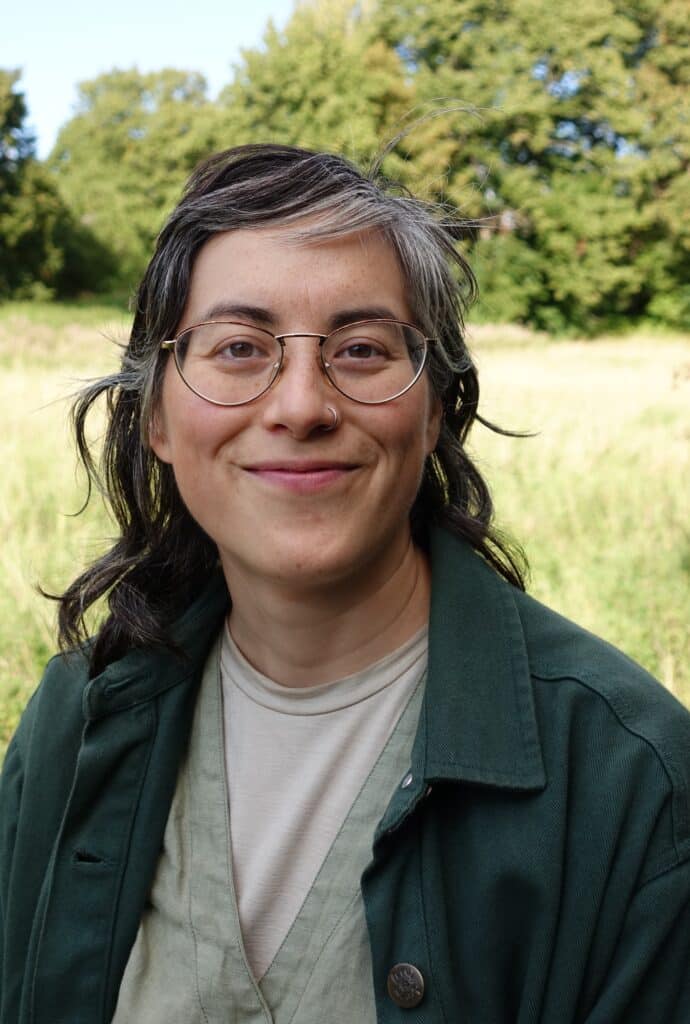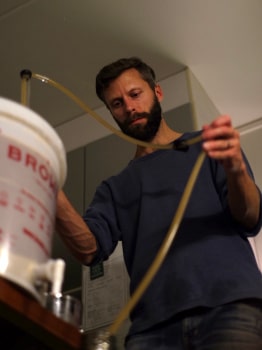By Will LaFleur and Alicia Ng
As microbial social scientists with the Center for the Social Study of Microbes (CSSM) we seek to generate a more nuanced and critical awareness of the microbial worlds that we all inhabit, and indeed, mutually constitute.
We begin with mushrooms. Well, more specifically, with fungi. Fungi can range in classification from the microbial to the multicellular, making the capture of their essence in Linnean taxonomies tricky, while geneticists are frustrated by fungal mycelia’s ever-shifting DNA (Money 2013; Tsing 2015: 137-44). Here, we follow fungi in one of the most direct social ways we know: foraging for mushrooms.
Autumn in Finland is mushroom season. It’s a time to be in the forest, searching for mushrooms emerging from the underground (or from forest debris lying on the ground) like antennas, giving us some signals as to the web of diverse forest-fungi-microbe associations happening below, and around, our feet. Before we enter the forest, a few notes on the relationships of fungi, microbes, forests and climate, and what might emerge through thinking socially with these things.
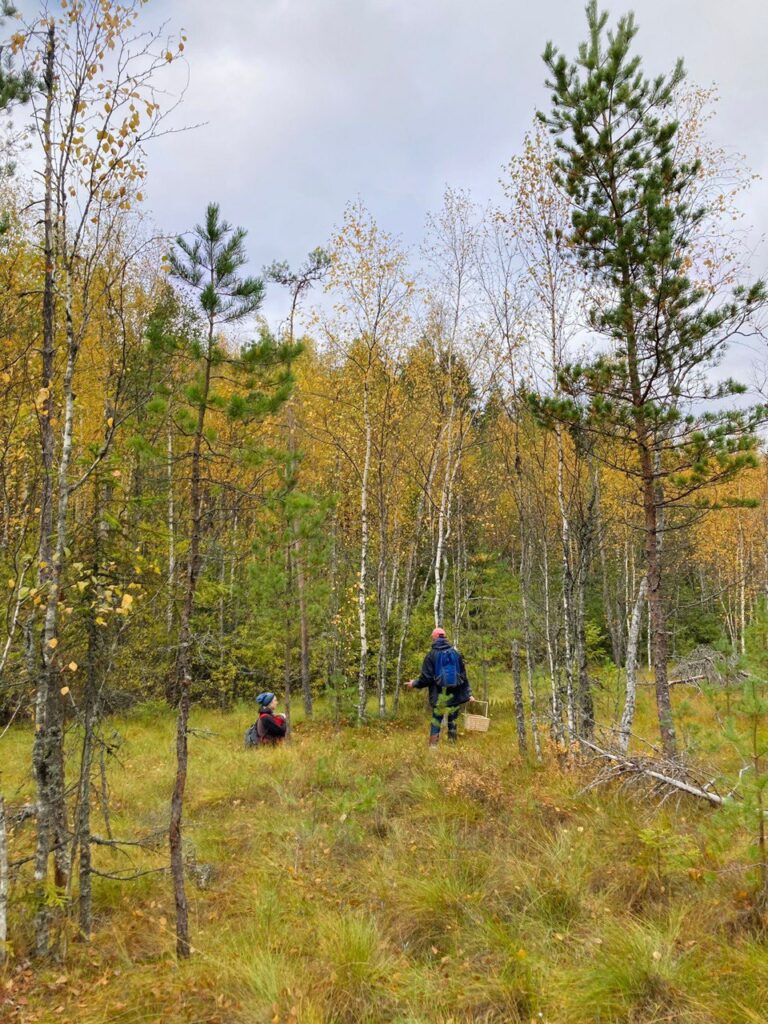
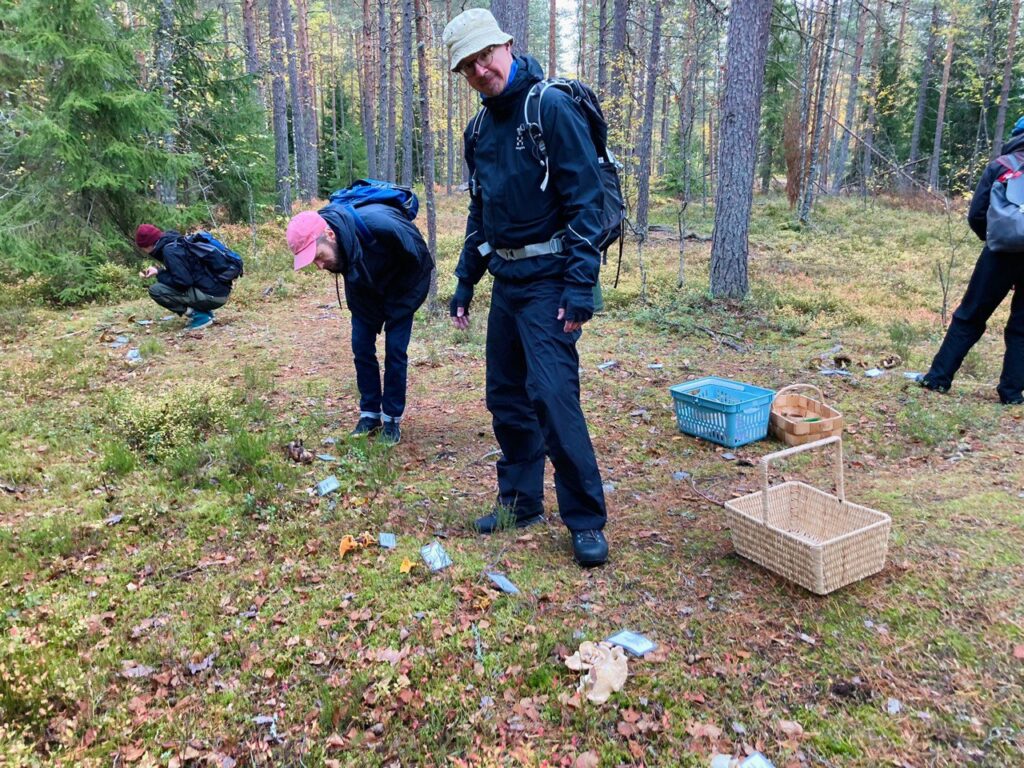
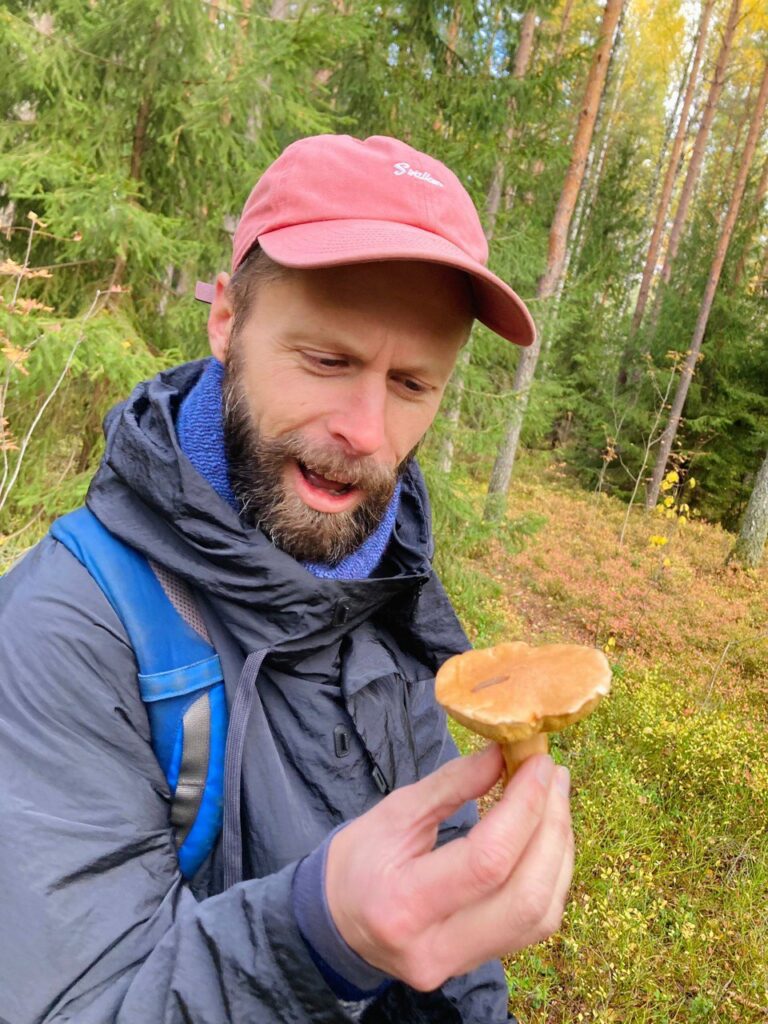
“Microbe” or “microorganism” refers to a diverse group of organisms that are invisible to the naked eye, such as bacteria, archaea, and protozoa. But some organisms, such as fungi and algae, are not as easily classifiable as “microorganisms”. This is because some of these species grow large, multicellular structures that are readily visible. Microscopic fungi, such as moulds and yeasts, are considered as microbes, however.
This includes types of belowground fungi such as arbuscular mycorrhizal fungi (AMF), a type of endomycorrhizal fungi. AMF is made up of microscopic hyphae that penetrate plant root cells, developing a symbiotic nutrient exchange with various plants and trees. Similar to AMF, ectomycorrhizal fungi also associate with plant roots, breaking down organic matter and facilitating underground microbial mobility in forests. These types of ectomycorrhizal fungi also periodically make above ground fruiting bodies—mushrooms—which afford a wealth of opportunity for diverse more-than-human-fungi relations.
At a recent lecture attended by some CSSM members, Anna Tsing implored her audience to “get to know other beings in order to tell human stories.” After a foraging excursion with CSSM members, we found it useful to think with Tsing’s exhortation, asking: how does one ‘get to know’ mushrooms, and what kinds of human stories might be told through venturing out into the mycelia-rich forests of Finland with colleagues, getting to know mushrooms in the midst of the driest autumn in 50 years?
Lots of people ‘get to know’ mushrooms through buying them in plastic packages at supermarkets; many others get to know them through autumn (and spring and summer) forest excursions in search of multiple kinds of nourishment; and still others get to know mushrooms through the bodily-hallucinatory euphoria they may offer. Yet these ways of getting to know mushrooms are invariably limited by what is industrially possible to grow, or else by what certain practices of attention, landscape affordances, seasonality, and weather conditions conspire to reveal.
In October, the CSSM ventured into the forest near Helsinki on the Tremanskärr Nature Trail taking part in a mushroom foraging workshop led by Anna Nyman, our enthusiastic local foraging expert and biologist. Anna started the workshop by serving hot cups of chaga mushroom tea, noting that chaga—a fungal parasite of birch trees that has become globally popular for its supposed health benefits—is one of the mushrooms we are not allowed to pick under Finland’s “Everyman’s Right” (lucky for us, Anna’s chaga was picked from her family’s property). As a whole, our CSSM mushroom picking group was quite experienced in getting to know mushrooms through forest excursions. This accumulated knowledge, however, is primarily oriented toward recognising those mushrooms which are either extremely deadly (e.g. funeral bells) or else both safe and edible—ceps (Latin: boletes; English: porcini; Finnish: tatti), chanterelles (cantharellus; kantarelli), or trumpet chanterelles (cantharellus; suppilovahvero).
These sorts of mushrooms grow ubiquitously in Finnish forests, are wildly popular to forage, and the ones that won’t kill you have the added benefit of being extremely delicious (with the exception of false morels—korvasieni, in Finnish—which can both kill and/or be extremely delicious if processed correctly). Imagine: the elegance of a fresh cep lightly fried in butter, or a dried cep infusing a soup or sauce with untold depth of flavour; a blanket of savoury chanterelle puree as winter comfort; or endless piles of trumpet chanterelles to get one through a long winter. Such enticing culinary possibilities and nourishment are certainly significant factors in mushroom foraging.
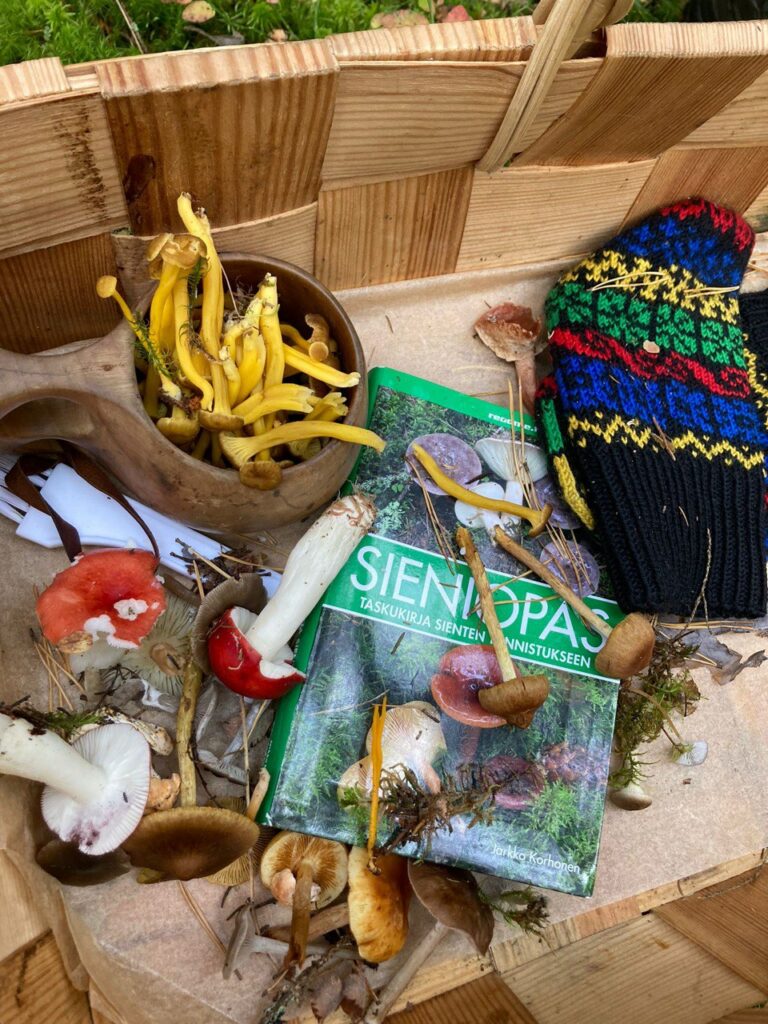
This year, however, a severe lack of autumn rain has meant these forests have not yielded many mushrooms at all—not the delicious ones most of us are accustomed to noticing, nor even the edible but apparently less common ones our mushroom guide exhibits for us at the start of the workshop. Having been exceptionally dry in southern Finland this season, the assumption among our group prior to the excursion was that mushrooms would be sparse. An attitude that “any mushroom is fine” seemed to prevail.
As we began venturing into the forest, the usual fungal suspects were indeed conspicuously absent. Yet, despite their absence, or rather because of their absence, other mushrooms were conspicuously present. Deprived of the usual mushrooms, a more careful examination of the forest floor was demanded of our attention. Thus, improvising the “arts of noticing” (Tsing 2015), we were oriented towards less- or non-edible mushrooms (and even beyond mushrooms, to cranberries for instance). This attentional shift revealed mushrooms that we had either never seen, or simply never noticed before.
Many of these newly-noticed mushrooms were saprophytes, fungi that degrade plant and animal matter. Our guide pointed out to us that these degraders were likely so plentiful due to recent rains that came after a long dry spell in September and August. Of course, in an autumnal forest covered in dead and decaying leaves it’s no wonder that degrader organisms were taking any rain-filled opportunity to reproduce, spread, and degrade more. These saprophytic types dotted the forest floor, sometimes growing on and decomposing bits of fallen pine. Because many saprophytic fungi were incredibly small, at first our attention drifted to the more obvious ones—‘false chanterelles’—so named for their visual (but not aromatic, gustatory or tactile) similarity to the better-known chanterelles.
Other, smaller saprophytic mushrooms were scattered around the forest on large tufts of green algae, mats of leaf litter, or upon half-decayed, fallen over logs. Crouched down low enough, one could see different types grouped in loose caches: those with purple caps here (“what an odd colour, how have I never seen these before?”), another group with brownish-red caps further back on some rotted wood; many standing upon thin, spindly stems. These were fungal others that had been overlooked in previous years, and were now drawing our renewed attention. Our guide told us that even she had been discovering new mushrooms this year. In the end, there were not many mushrooms to take home and cook up. But perhaps the real nourishment came from simply being in the forest together, learning, discussing, looking and noticing in new ways—and sharing some homemade bread.
Coming back now to Tsing’s question: what human stories are revealed through this attentional shift in the arts of noticing and ‘getting to know’ differently? For one, the lack of familiar edible mushrooms—due to a dearth of rainfall—points clearly to the story of a climate in crisis. But it also shows us that as the climate changes so do the ways we notice and attend to the world. It is here, we might suggest, in these shifts of attention to previously unseen or unnoticed possibilities, where the ongoing story of humans still offers hope. As the climate changes and depletes possibilities of noticing the things we have grown accustomed to, it becomes critical to ask: what are the possibilities and potentials of noticing amidst increasing uncertainty?
